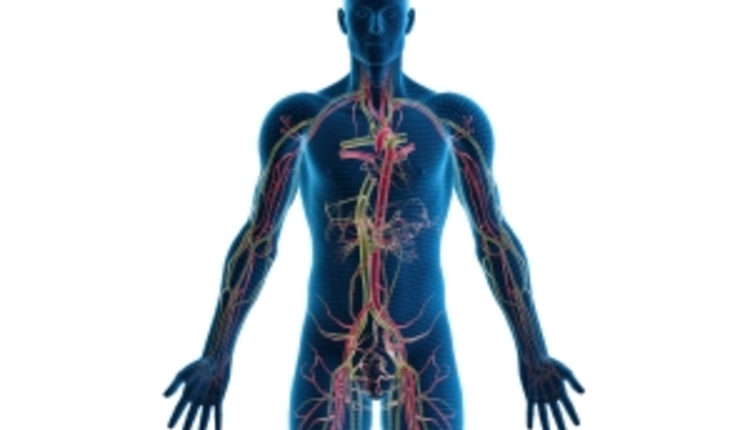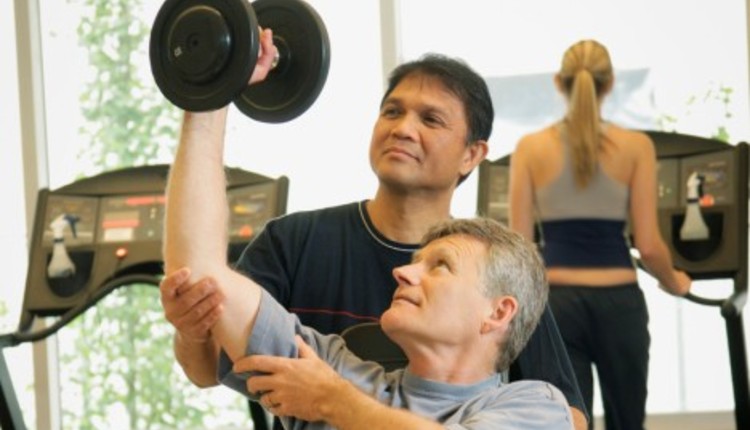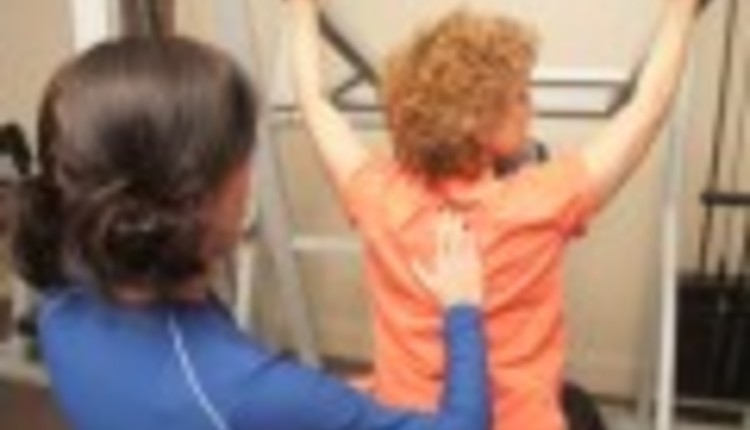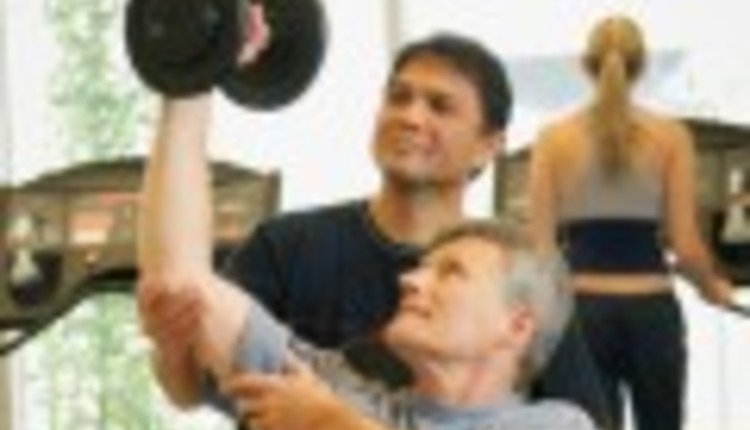
Editor's Note: "The Boomers" is a miniseries on how you can make the baby boomer market successful within your fitness business. Part four, "The Effects of Aging" explores the ways the body changes over time, helping trainers understand what is going on inside the bodies of their older clients.
For more of this series and other articles about this population, see "Related Resources" below.
When I was a little girl, one of my favorite things was my Dad's imitation of Frankenstein. On Saturday mornings, I would listen for my Dad as he began his trek up the stairs. I could easily sense his movement as he made his way somewhat stiff legged and with arms extended in front of him just like Frankenstein. For extra measure, he would bump against doorframes and walls. I would hear my brother laugh with delight as my Dad tucked him under one arm and proceeded down the hallway to gather me up too, before heading downstairs for a big family breakfast.
Years later, I asked Dad why he chose to imitate Frankenstein on those now long ago Saturday mornings, and he simply replied that he had "felt" like Frankenstein when he first awoke most mornings. His job as an air traffic controller was stressful and he was confined to a chair most of the time he was at work. Add to that a schedule of odd hours, and he said he woke up with stiff and aching joints that made his Frankenstein act not much of an "act." As a young adult I couldn't relate to this, but along with middle age came understanding! Not only do I have chronic aches and pains, it also takes much longer to recover when I "overdo it." But, when I stick to a good exercise program, I feel much better!
"Years ago, people who were in pain were told to rest," says Edward Laskowski, M.D., aphysical medicine and rehabilitation specialist and co-director of the Sports MedicineCenter at Mayo Clinic in Rochester, Minnesota. "But now we know the exact opposite is true.When you rest, you become deconditioned -- which may actually contribute to chronicpain."
Regular exercise is an all-around weapon in the fight against chronic pain and can:
- Prompt the body to release endorphins, which are the body's natural pain relievers and help alleviate anxiety and depression.
- Help build strength--and the stronger the muscles, the more force and load that will be taken off bones and cartilage.
- Increase flexibility to allow joints to move through a full range of motion, which can decrease aches and pains.
- Improve sleep quality by lowering stress hormones, resulting in better sleep.
- 5. Boost energy levels, giving a person more energy to cope with chronic pain.
- Help maintain a healthy weight, which will reduce stress on the joints (weight loss is another way to improve chronic pain).
- Enhance mood and contribute to an overall sense of well-being.
So, while you must be concerned about injuring a person who has chronic pain when you are designing an exercise program for them, a well-designed program will be very beneficial for them. With that said, working with people recovering from injuries, surgery or chronic diseases or undergoing medical rehabilitation demands specialty training. The personal trainer without advanced training is not in a position to safely work with at-risk clients and could be vulnerable to costly legal action. And, even if you are qualified to work with these clients, you need to make certain that they do not have conditions that need the attention of a physician or other specialist, and you also need to verify that the person has been "released" or cleared for exercise if they have been under the care of a medical professional.
Given the ever increasing number of at-risk older clients in the fitness setting, suitable preactivity screening methods are a must to identify members who may need medical clearance and/or medically supervised programs or a trainer with advanced skills. Yet, studies show that more than 25% of all clubs surveyed do not complete preactivity screenings. (The percentage of personal trainers working independently who do not perform adequate screening prior to working with a new client is unknown.) So I reiterate that proper screening of a new client is essential in deciding if there are conditions that need to be assessed by a therapist or physician prior to exercise or if the person needs to be referred to a trainer with more experience than you have.
Keep in mind the following exercise guidelines for a client that who has no significant chronic pain or one with pain who has been released from therapy and is in a stable phase.
- Aerobic exercise. For physical conditioning, start slowly at a safe point for your client's current abilities. Slowly work up to a regular routine of 20 to 30 minutes, three to five times a week. Low-impact exercise such as biking, the elliptical and walking are often good choices, and swimming may be especially effective for those with joint disease.
- Strength training. Start with a resistance that allows your client to perform 12 to 15 repetitions and work all major muscle groups.
- Stretching. Increasing flexibility can be a helpful component of pain relief. Prescribe a consistent stretching routine. Gentle stretching exercises like yoga or body movement exercises such as Pilates are good choices as well.
For your clients who have chronic aches and pains, have them keep a journal of what they are feeling and when they are feeling it. If you notice patterns or particular aches after certain types of exercise, and after two weeks there is no improvement, then you should recommend the client see a physical therapist, orthopedic doctor or other health professional if they have not done so previously. As you already know, a small amount of muscle soreness one or two days after exercise is normal. Another rule of thumb is to discontinue or modify any exercise that causes pain or increases an already existing pain for more than two hours after the exercise.
To wrap up, it is also very important to teach your clients, especially those with arthritis, about the difference between "types" of pain. We sometimes distinguish pain as "good pain' versus "bad pain." A better description might be "soreness" versus "pain."
- Good pain, or soreness, is felt in the muscle, not in the joint. It stops within a few minutes after exercise ends. There is less soreness associated with each subsequent exercise session. Normally, soreness is what we all experience to some extent when we exercise.
- Bad pain occurs in or near the joint, continues to hurt after exercise is complete, and does not improve with future sessions. It might even worsen with time. This usually indicates a joint, tendon or muscle abnormality.












